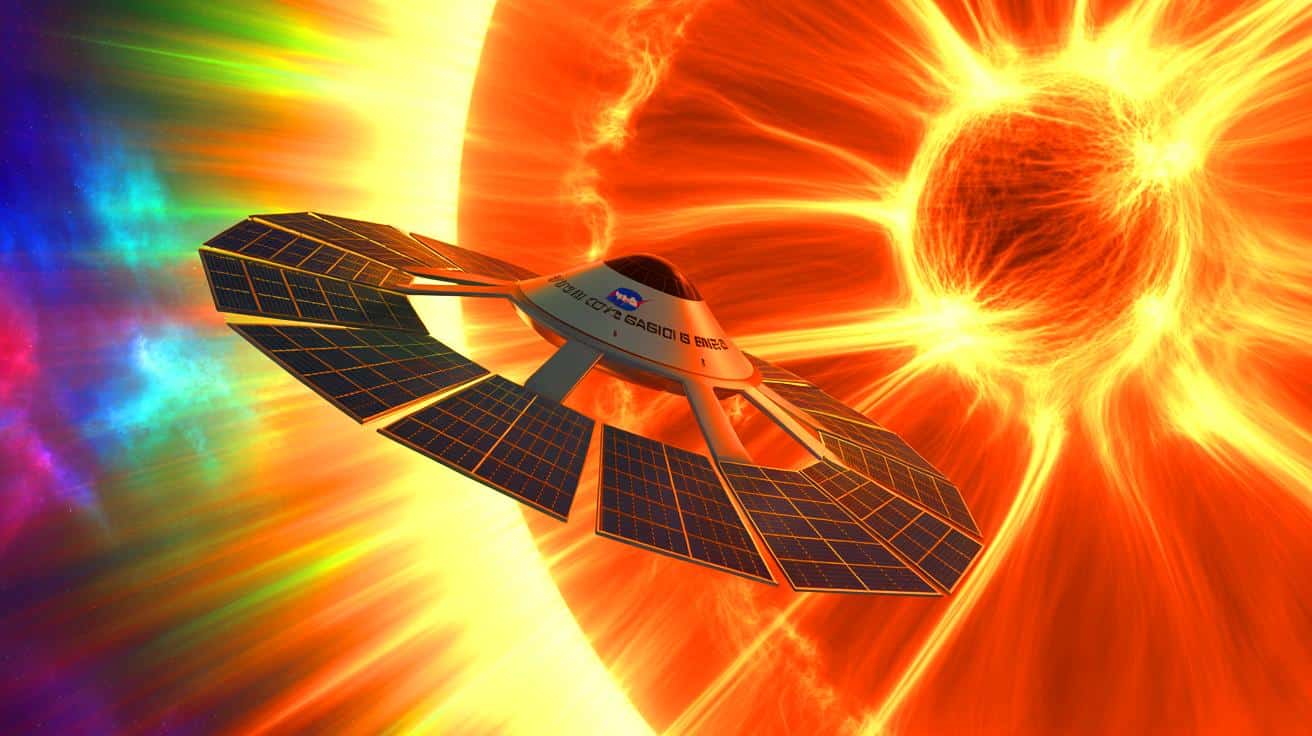IN A NUTSHELL
🌪️ Geomagnetic storms can cause global internet outages, costing the U.S. economy $7.2 billion daily.
🔭 A team from the University of Michigan proposes a constellation of spacecraft for early warning of space weather.
🛰️ The SWIFT concept involves solar sail probes at Lagrange Point 1 for faster space weather warnings.
📉 Recent incidents show the real-world impact of geomagnetic storms on technological infrastructure.
As our world becomes increasingly reliant on technology, the threat posed by geomagnetic storms is gaining attention. Recent studies have highlighted the enormous economic impact that these solar-induced phenomena could have on our infrastructure. Geomagnetic storms could trigger global internet outages, costing the U.S. economy a staggering $7.2 billion per day. To mitigate such risks, scientists are advocating for improved systems to detect these “space tornadoes”—massive plasma eruptions from the sun. A team from the University of Michigan proposes a constellation of spacecraft equipped with solar sails as a potential early warning system.
Understanding the Threat of Space Tornadoes
Geomagnetic storms, caused by coronal mass ejections (CMEs) from the sun, are akin to natural disasters on Earth. Former NASA chief Charles Bolden once warned that space weather could be as devastating as tornadoes or hurricanes. These storms have the potential to disrupt satellite orbits, and in severe instances, could induce a global internet outage. The University of Michigan team has delved into this threat, using computer simulations to better understand the impact of solar weather events.
In these simulations, enormous plasma clouds were modeled as they erupted from the sun and traversed our solar system. Smaller, tornado-like structures known as flux ropes formed within the solar wind. These magnetic vortices can be strong enough to trigger geomagnetic storms on Earth. According to Chip Manchester, the study’s corresponding author, such storms could cause significant disruptions to our technological infrastructure.
The simulations revealed that flux ropes can range from 3,000 to 6 million miles in length. The researchers found that these tornadoes formed when CMEs interacted with slower solar wind streams. While many dissipated quickly, others lingered and posed a greater threat. The researchers assert that telescopic observations alone are insufficient for early detection, advocating for a more comprehensive approach to monitoring solar winds.
Proposed Solution: Solar Sail Probes
To improve space weather forecasting, the University of Michigan team has proposed an updated spacecraft constellation concept called the Space Weather Investigation Frontier (SWIFT). This would involve deploying four probes in a triangular-pyramid formation, each approximately 200,000 miles apart. Three identical probes would occupy the corners, while a hub spacecraft would face the sun, providing a comprehensive view of incoming solar winds.
The hub spacecraft could take inspiration from NASA’s Solar Cruiser, which was designed to study the sun with an aluminum solar sail. By positioning these probes at Lagrange Point 1 (L1), a stable orbital location between the Earth and the sun, the scientists believe they could achieve a 40 percent increase in the speed of space weather warnings. Such improvements could be crucial in mitigating the effects of geomagnetic storms on Earth.
The importance of this research is underscored by the potential economic ramifications of a powerful CME. In 2021, a paper by University of California, Irvine assistant professor Sangeetha Abdu Jyothi highlighted the vulnerability of our internet infrastructure to solar storms. A severe CME could damage undersea cables, leading to widespread internet outages and costing the U.S. economy billions daily.
Past Incidents Highlight the Need for Vigilance
Recent history has demonstrated the real-world impact of geomagnetic storms. In May 2024, such a storm disrupted satellite orbits, tripped high-voltage power lines, and forced some aircraft to alter their flight paths. These incidents serve as a stark reminder of the potential chaos that space weather can unleash on our technological systems.
Despite these threats, public awareness of space weather remains limited. As our reliance on technology grows, the need for robust early warning systems becomes more pressing. The proposed constellation of spacecraft could play a pivotal role in protecting our infrastructure from the devastating effects of geomagnetic storms.
By enhancing our ability to predict and respond to solar weather events, we can safeguard the technological backbone of our modern society. This proactive approach is essential to minimizing the economic and societal impacts of space weather.
Looking Ahead: The Future of Space Weather Forecasting
As we continue to explore the vastness of space, understanding and mitigating the effects of solar weather becomes increasingly important. The University of Michigan’s proposal for a constellation of solar sail probes represents a significant step forward in our ability to predict and respond to geomagnetic storms. This innovative approach could revolutionize space weather forecasting, providing the advanced warning needed to protect our technological infrastructure.
The implications of such advancements are profound. By investing in space weather research and technology, we can better prepare for the challenges posed by our sun’s activity. This proactive stance will be crucial in ensuring the resilience of our society in the face of space weather events.
The question remains: how will we continue to innovate and adapt our systems to meet the evolving challenges of space weather in the years to come?
This article is based on verified sources and supported by editorial technologies.
Did you like it? 4.6/5 (29)

